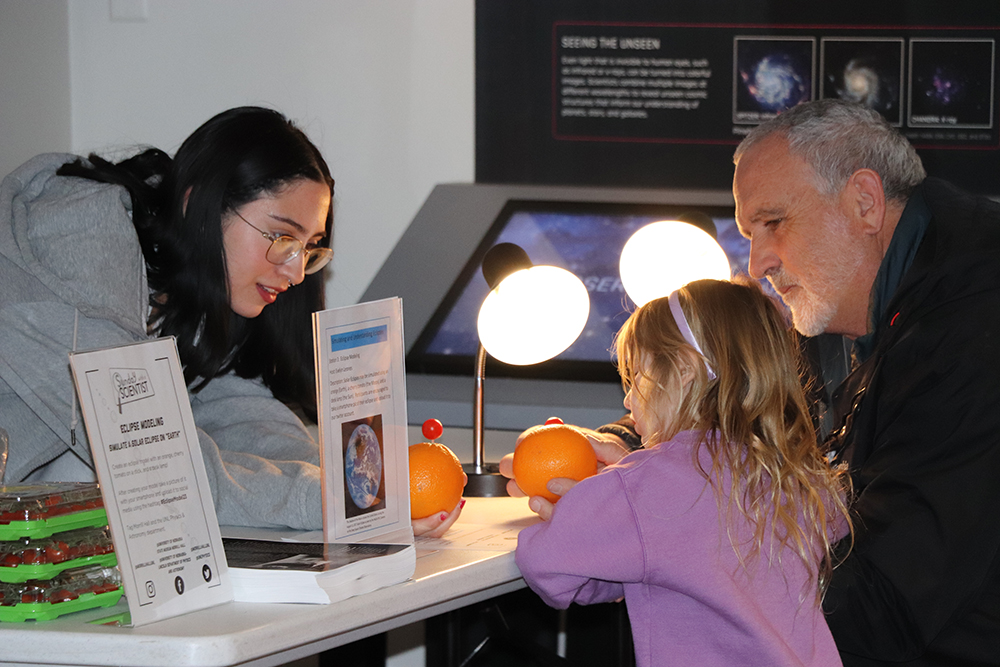
Eclipses are one of astronomy’s most awe-inspiring spectacles. On March 26, the University of Nebraska State Museum’s “Sunday with a Scientist” program welcomed 291 participants to learn about eclipses.
Led by scientist Kevin Lee, Rebecca Udby and Keith Foreman of the UNL Department of Physics & Astronomy, ten stations related to simulating and understanding eclipses were hosted by the UNL astronomy education group, astronomy undergraduate teaching assistants, the Honors students of ASTR 103, and ambassadors of the NASA Nebraska Space Grant.
This series of interactive demonstrations captured this wonder of eclipses and led participants through a conceptual progression related to eclipses. Although the vast majority of people have seen a lunar eclipse without exerting much effort, solar eclipses require quite a bit more effort to see (as well as the need to follow safety guidelines). Solar eclipses visible throughout large swatches of the United States are coming up on Oct. 14, 2023, and April 8, 2024. Both will be visible as partial eclipses in Nebraska.
The station topics ranged from artistic creation (for ages 4-8), eclipse modeling, exploring angular diameter of the Sun and Moon, and ranking and sorting tasks as well as simulations accessed using smartphones.